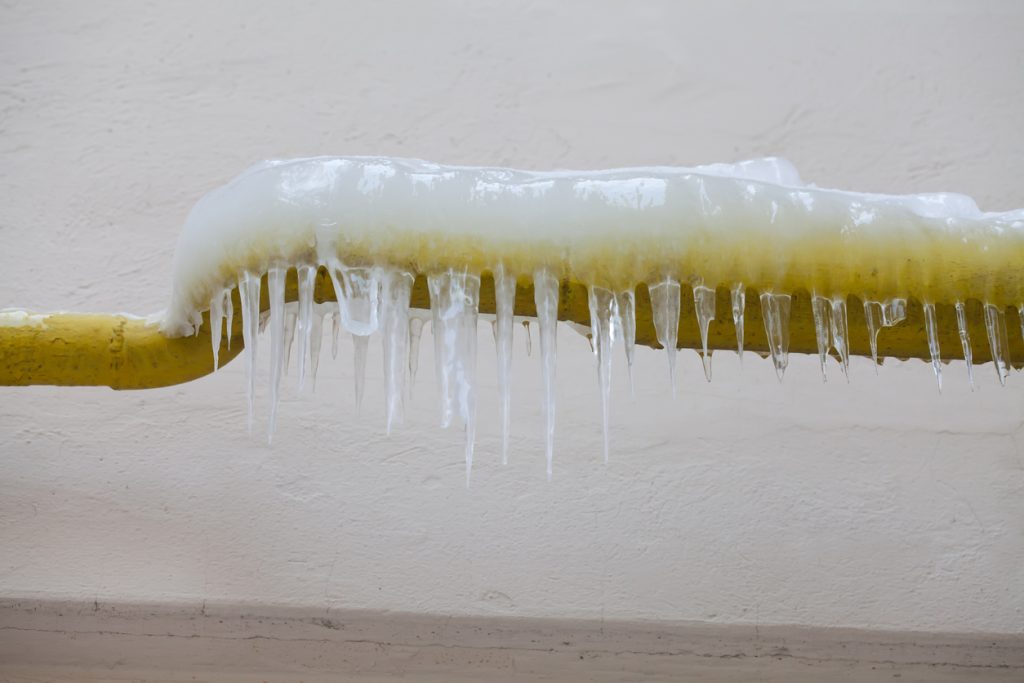The article author is making a number of good points relating to Prevent Frozen Pipes overall in this content below.

Winter can wreak havoc on your pipes, especially by freezing pipes. Below's just how to prevent it from happening and what to do if it does.
Intro
As temperatures drop, the threat of icy pipelines boosts, possibly resulting in pricey repair services and water damage. Comprehending how to avoid icy pipes is essential for house owners in cold climates.
Avoidance Tips
Protecting at risk pipes
Cover pipelines in insulation sleeves or utilize warm tape to secure them from freezing temperature levels. Concentrate on pipelines in unheated or outside locations of the home.
Heating strategies
Keep interior rooms properly heated, especially areas with pipes. Open closet doors to allow cozy air to distribute around pipes under sinks.
Just how to determine frozen pipelines
Try to find decreased water circulation from faucets, uncommon smells or noises from pipes, and noticeable frost on exposed pipelines.
Long-Term Solutions
Architectural modifications
Consider rerouting pipes away from outside wall surfaces or unheated locations. Add extra insulation to attic rooms, cellars, and crawl spaces.
Upgrading insulation
Buy top notch insulation for pipelines, attics, and wall surfaces. Appropriate insulation aids preserve constant temperatures and reduces the threat of icy pipes.
Securing Exterior Plumbing
Garden pipes and outdoor taps
Detach and drain garden hose pipes prior to winter season. Mount frost-proof faucets or cover exterior faucets with shielded caps.
Comprehending Icy Pipes
What creates pipes to freeze?
Pipelines freeze when exposed to temperature levels listed below 32 ° F (0 ° C) for prolonged durations. As water inside the pipelines freezes, it broadens, putting pressure on the pipeline wall surfaces and possibly triggering them to burst.
Risks and damages
Icy pipes can bring about supply of water disruptions, building damage, and pricey repair work. Ruptured pipelines can flooding homes and cause considerable architectural damage.
Indicators of Frozen Pipeline
Determining frozen pipes early can avoid them from rupturing.
What to Do If Your Pipes Freeze
Immediate actions to take
If you suspect frozen pipelines, maintain taps available to relieve pressure as the ice melts. Utilize a hairdryer or towels taken in warm water to thaw pipelines gradually.
Verdict
Protecting against icy pipes needs proactive measures and fast responses. By understanding the reasons, indications, and safety nets, home owners can protect their pipes during cold weather.
5 Ways to Prevent Frozen Pipes
Drain Outdoor Faucets and Disconnect Hoses
First, close the shut-off valve that controls the flow of water in the pipe to your outdoor faucet. Then, head outside to disconnect and drain your hose and open the outdoor faucet to allow the water to completely drain out of the line. Turn off the faucet when done. Finally, head back to the shut-off valve and drain the remaining water inside the pipe into a bucket or container. Additionally, if you have a home irrigation system, you should consider hiring an expert to clear the system of water each year.
Insulate Pipes
One of the best and most cost-effective methods for preventing frozen water pipes is to wrap your pipes with insulation. This is especially important for areas in your home that aren’t exposed to heat, such as an attic. We suggest using foam sleeves, which can typically be found at your local hardware store.
Keep Heat Running at 65
Your pipes are located inside your walls, and the temperature there is much colder than the rest of the house. To prevent your pipes from freezing, The Insurance Information Institute suggests that you keep your home heated to at least 65 degrees, even when traveling. You may want to invest in smart devices that can keep an eye on the temperature in your home while you’re away.
Leave Water Dripping
Moving water — even a small trickle — can prevent ice from forming inside your pipes. When freezing temps are imminent, start a drip of water from all faucets that serve exposed pipes. Leaving a few faucets running will also help relieve pressure inside the pipes and help prevent a rupture if the water inside freezes.
Open Cupboard Doors
Warm your kitchen and bathroom pipes by opening cupboards and vanities. You should also leave your interior doors ajar to help warm air circulate evenly throughout your home.

We had been guided to that report about How To Avoid Freezing Pipes from someone on another web property. Kindly set aside a second to share this blog posting if you liked it. Thanks for going through it.
Appointment
Comments on “Critical Methods for Preventing Frozen Pipes in Cold Weather”